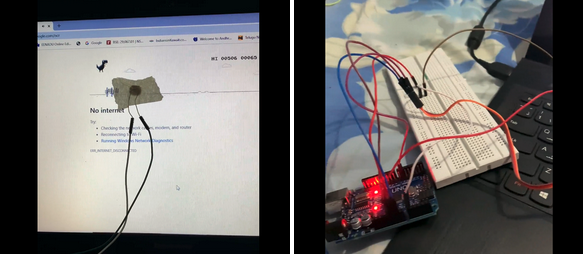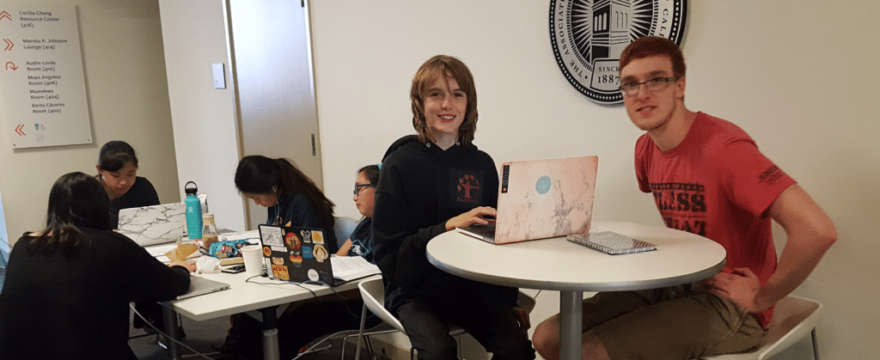Breakout Mentors focuses on providing personalized 1-on-1 programming mentoring for kids. We don’t do this because it is easy, but because it is the ideal way to make a significant and long-lasting impact on our student’s lives. In fact it is very hard – it would be much easier to run summer camps with scores of kids, simply skimming the surface of what computer programming is about. There are lots of people who offer those services.
We strive to provide a real depth in education that isn’t available anywhere else. The goal is to generate interest for years to come. Why do we feel so strongly that a 1-on-1 personalized education is important in accomplishing this?
Move As Fast (Or Slow) As You Want
It’s a blessing in disguise that programming is not taught in school with a series of classes like mathematics. Students that enjoy the subject are able to move at their own pace of learning, unhindered by other students. Some kids struggle with the logical thinking skills programming requires. Imagine a classroom of thirty 6th graders – the distribution of natural programming ability will be much wider than ability in social studies. Unfortunately in a classroom setting it is difficult to teach to the entire spectrum. The teacher ends up adjusting the content so the majority of students are able to ‘succeed’. This greatly stunts the growth of young programmers at the upper end of potential. Sadly these experiences could even teach them that they don’t like coding because it is so slow and feels so much like following instructions.
Breakout Mentors provides 1-on-1 programming mentoring without a rigid curriculum. Each student is able to move at their own pace, which has a tremendous benefit for the many gifted students we teach. We won’t slow you down or leave you working indefinitely on easy tasks. But we also don’t just give you the answers, the way a teacher might.
It’s also important that we don’t let you rest on your laurels. Real learning requires pushing your comfort zone. Online tutorials are an excellent way to get exposure to concepts, but usually lack ambition. Many of our students are used to school being easy. Coding can be hard – too often both kids and adults attempt to learn to code entirely on their own. Positive reinforcement goes a long way. Our mentors can be someone sitting right next to them, who has been there, done that; Pushing at the perfect pace, sharing exciting possibilities, introducing large-scale fun projects. We work to find the perfect balance for your student.
Go In Any Direction You Want
Computer programming is a unique subject that can be taught more like art than math (even though most classroom teachers still teach it like math). Teach skills, techniques, and concepts – but then encourage exploration. With large classes it is difficult to embrace this creativity and programming starts to resemble paint-by-numbers “art”.
Kids are naturally creative – this is obvious to anyone that has seen what kids can do with a couple of refrigerator boxes. But usually their engineering projects are limited to the materials on-hand. With computer programming, anything is possible. There are no expensive parts to buy, pixels are free.

Well, there are some really cool projects you can do with $50 worth of hardware, but that’s still less than the cost of a soccer uniform!
Any computer programming education that fails to take advantage of the potential for creativity is less than ideal. With our 1-on-1 mentoring we are able to encourage our student’s ideas and help bring them to life. There is nothing more powerful than seeing your unique ideas actually on the screen. Our mentors can take the time needed to help the student learn the skills they need for their pet project.
We help the students design and complete projects they can be proud of at the end of the session and at the end of the month.They have something to show for their effort at the end of the hour and a working piece of software to show off after a month or more of grit and learning.
Learn In A Way That Works For You (And Your Schedule)
The term coding environment usually refers to what program you type your code into on the computer. It matters, but for kids the learning environment is more important. The learning environment is your surroundings, including the people around you!
We build an environment that works for you. Many of our students meet virtually, saving themselves time traveling and in the comfort of their own home. Some students who don’t work well in this way meet in person. Students can even meet on a university campus like Dakota in our picture on the UC Berkeley campus, surrounded by others studying. While summer camp with a couple dozen kids, some who aren’t all that interested or focused, can be fun, it is hardly an ideal environment for learning.

Our mentors are available to meet on your schedule, weekdays or weekends. They also are able to reschedule as needed. That’s not something you can do with a full class. This way you can avoid the dreaded gap where the student has forgotten everything and missed that last class’ content.
Come Experience It
Computer programming is not an easy subject and is entirely optional in today’s school system. There are plenty of kids that are interested in computers and how they work, but with the wrong educational approach they might flounder. If a student is going to stay with the subject long enough to unlock the incredible benefits down the road, they have to stay interested. The goal of Breakout Mentors is to give these students the highest quality programming education available and keep interest high. If you would like to learn more, please contact us today.
